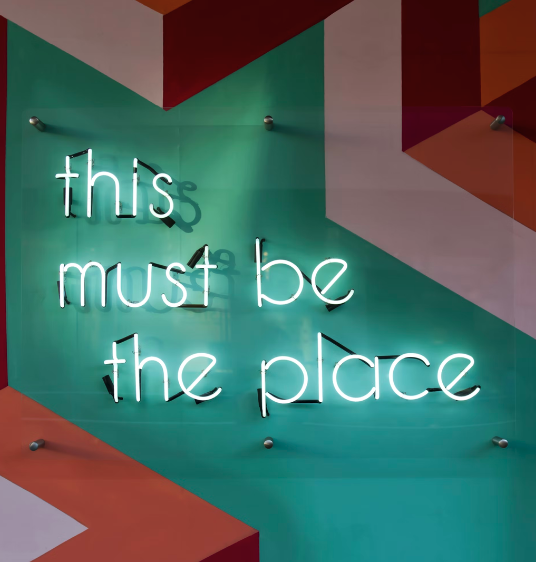How to avoid greenwashing

Ever-changing technical language in the sustainability space, combined with the increased need for transparency means greenwashing is happening more than ever, often by accident. While many brands and organisations are truly trying to be environmentally responsible, the pressure to stand out often leads to woolly messaging or setting goals which are impossible to meet.
And as the EU’s Green Claims Directive comes into effect, and governments all over the world implement stringent anti-greenwashing laws, no matter how good your intentions, it’s never been so important to get your wording right.
Hooton wants to make green comms as easy as possible. That’s why we have launched our Greenwashing Review service – helping brands and businesses to rethink their messaging and communications so that they can still shout about their sustainability efforts, without overstepping the mark.
To give you a headstart, we have decoded some of sustainability’s vaguest vocabulary and most misunderstood terms (including the word ‘sustainability’ itself).
🍀 BIODEGRADABLE 🍀
What does ‘biodegradable’ actually mean?
The term describes something that can break down naturally over time, without relying on industrial composting or recycling processes. For example, flowers are biodegradable due to their ability to naturally decay without leaving any harmful products behind.
When to use ‘biodegradable’?
Use the term if 100% of your product naturally degrades into the environment without leaving any residue or harmful substances. However, be cautious – if only part of your product is biodegradable, you need to specify this. For instance, the external part of cardboard coffee cups might naturally degrade over a prolonged period of time, but the inner film, which is polyethylene, needs external resources such as heat and oxygen to fully break down. (That’s why the EU Commission has banned the term’s generic use in marketing under the new Green Claims Directive passed this year.)
Real-world example:
Almost all retail brands label their toilet rolls as biodegradable. However, consumers should be aware that the majority of paper rolls often require specific conditions, such as industrial composting facilities, to break down effectively. (What’s more? Most of these rolls release chemical bleach into the environment, making them particularly unsustainable.) Without proper disposal methods, they may not degrade as intended – and calling them “biodegradable” is misleading.
♻️ CIRCULAR ECONOMY ♻️
What is a ‘Circular Economy’ exactly?
A circular economy is like a loop where products, materials, and resources are kept in use for as long as possible. Instead of the traditional linear model of take-make-waste, a circular economy aims to minimise waste and maximise the value of resources by designing products for longevity, promoting reuse and recycling, and reducing overall consumption.
When to use ‘Circular Economy’
While adopting circular practices is crucial for sustainability, it's essential to understand that achieving a circular economy requires systemic changes across industries and society. The term 'circular economy' should be used to describe efforts that redesign systems and processes to eliminate waste and promote resource efficiency.
Real-world example:
Consider Circular Industry Co.,Ltd., which is a B Corp textile company operating on the principles of circular economy. By developing products that are designed for durability, repairability, and recyclability, and using recycled fabrics from factory waste, it is contributing to a more sustainable future. Its initiatives not only reduce waste but also create new economic opportunities while protecting the environment.
💎 CARBON CREDIT 💎
What does ‘Carbon credit’ actually mean?
Carbon credits or offsets represent GHG (GreenHouse Gas) emissions that have been reduced, avoided or captured through projects that are verified according to credible standards. Each offset or carbon credit is equivalent to one metric ton of carbon dioxide equivalent (CO2e). Think of it as a currency that’s valued on reduced emissions.
When to use ‘Carbon-credit’?
While purchasing carbon credits and contributing to global decarbonisation is commendable, it's important to note that a company cannot claim climate neutrality or positivity solely through offsetting. The term 'carbon credits' should be used to describe a company's participation in carbon removal programs, where investments are made in carbon reduction projects in exchange for credits.
Real-world example:
We aren’t going to provide a real-world brand example for this post, as carbon credits are currently under much investigation and debate.
If you are interested in carbon credits, we advise caution. In 2023 a high-profile investigation by the Guardian, Die Zeit, and SourceMaterial asserted that over 90 percent of rainforest carbon credits issued by Verra, the world’s leading carbon credit certifier, claimed reductions in deforestation that didn’t actually exist (source: Vox).
So if you’re looking to offset, choose your carbon credit supplier carefully. The UNFCCC (United Nations Framework Convention on Climate Change) has a database of certified suppliers here.
🪲 ECOLOGICAL 🪲
What does ‘ecological’ actually mean?
This term simply refers to the relationship between all living things and their environment.
When to use ‘ecological’?
As a general rule, you should only use the term "ecological" in your messaging when a product's design fully aligns with positive ecological principles, such as 100% biodegradability or reduced pollution. But make sure that all of these ecological attributes are accurate and backed by evidence (and that you’re fully transparent about the science behind them) — otherwise you’re risking yet more accusations of greenwashing.
Real-world example:
Ecological principles, like those embraced by the luxury resort Soneva Fushi in the Maldives, prioritise preserving nature's balance, ensuring lush landscapes and vibrant ecosystems for all living things. On the flipside, brands like IKEA may try to source and recycle their products sustainably, but that doesn’t make them ecological.
🌱 ECO-FRIENDLY 🌱
What does ‘eco-friendly’ actually mean?
The term was originally coined to describe products, practices, or actions that minimise harm to the environment or promote sustainability. However, it has become overused and is inherently vague, leading to confusion among consumers.
When to use ‘eco-friendly’?
You can use “eco-friendly” to describe specific initiatives or solutions that genuinely benefit the environment, such as renewable energy adoption, waste reduction programs, or sustainable sourcing and recycling practices. But, we wouldn’t recommend it. “Eco-friendly" is used in many misleading marketing campaigns and is also banned under the Green Claims Directive, unless brands can prove truly excellent environmental performance. Instead, talk about the actions and proof points that make you “eco-friendly."
Real-world example
Many companies (such as the brand Safely) market their cleaning products as eco-friendly, emphasising any biodegradable ingredients and minimal packaging. However, brands need to obtain third-party certifications and be fully transparent about their practices to ensure these claims align with genuine environmental benefits. As consumers, if a product says it’s eco-friendly, but doesn’t specify exactly how, then that’s a pretty big red flag.
🔎 TRACEABILITY 🔎
What does ‘traceability’ actually mean?
When you buy a product, you often don’t know where it came from, how it was made, and who was involved in its journey. That's where traceability comes in. It's all about transparency and accountability on the part of a brand, giving its consumers the power to follow a product's supply chain trail from farm to table, factory to shelf.
When to use ‘traceability’?
Although traceability may not always be referenced in marketing, its practice significantly boosts consumer confidence in a brand. If you’re in an industry like fashion or FMCG that has been under scrutiny for its supply chain practices, offering transparency for your products and services is a good differentiator, particularly when it comes to human rights, labour standards, and environmental responsibility.
Real-world example
Let’s talk about chocolate. You can often spot the origin of a chocolate bar’s cocoa beans, or a Fairtrade logo on the label, but is that enough? B Corp brands like Tony Chocoloney and The Raw Chocolate Company are leading the charge, offering detailed information about the origin of their beans, the farmer who grew them, and the journey they took to the point of sale. This level of transparency empowers and reassures consumers that their money isn't supporting companies engaging in poor labour practices.
Next time you buy from these brands, check their supply chain traceability practices on their website.
❇️ SUSTAINABLE ❇️
What does “sustainable” actually mean?
The definition of sustainable is “able to be maintained at a certain rate or level.” So when thinking about it in relation to the planet, At its core, "sustainable" is all about doing things in a way that doesn't leave our planet worse for wear. It's about meeting the needs of today without compromising the needs of future generations – think of it like playing the long game, and making sure we don’t use up all of the world’s resources before they can be replenished.
When to use “sustainable”
You can use the term to describe products, services or practices that don’t take more out of the environment than they give back. Sustainable agriculture practices allow soil to heal and replenish its nutrients, while renewable energy sources are sustainable because energy is continually generated without using anything up (we’re not going to run out of sun or wind). Slow fashion can be sustainable too, when it uses durable materials made of recycled or organic materials which don’t end up in landfill. So, if a particular aspect of your brand leaves the world a better place, you can label that aspect sustainable.
Real-world example
On one hand, we have brands like Stella McCartney, Patagonia, and Allbirds, which make a conscious effort to use every sustainable practice and initiative available (and be transparent about them). On the other side, we have fast fashion brands like H&M and Shein that use recycled polyester tags, send tonnes of stock to landfill. The latter isn’t sustainable at all.

